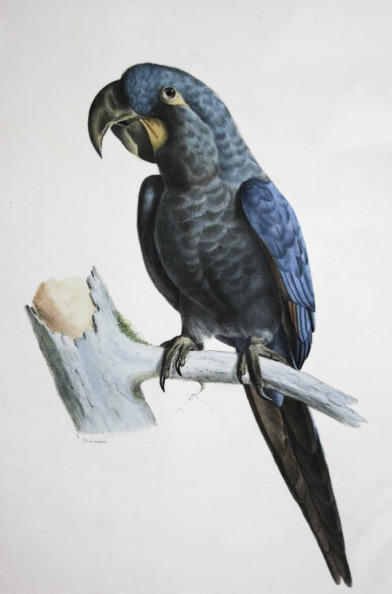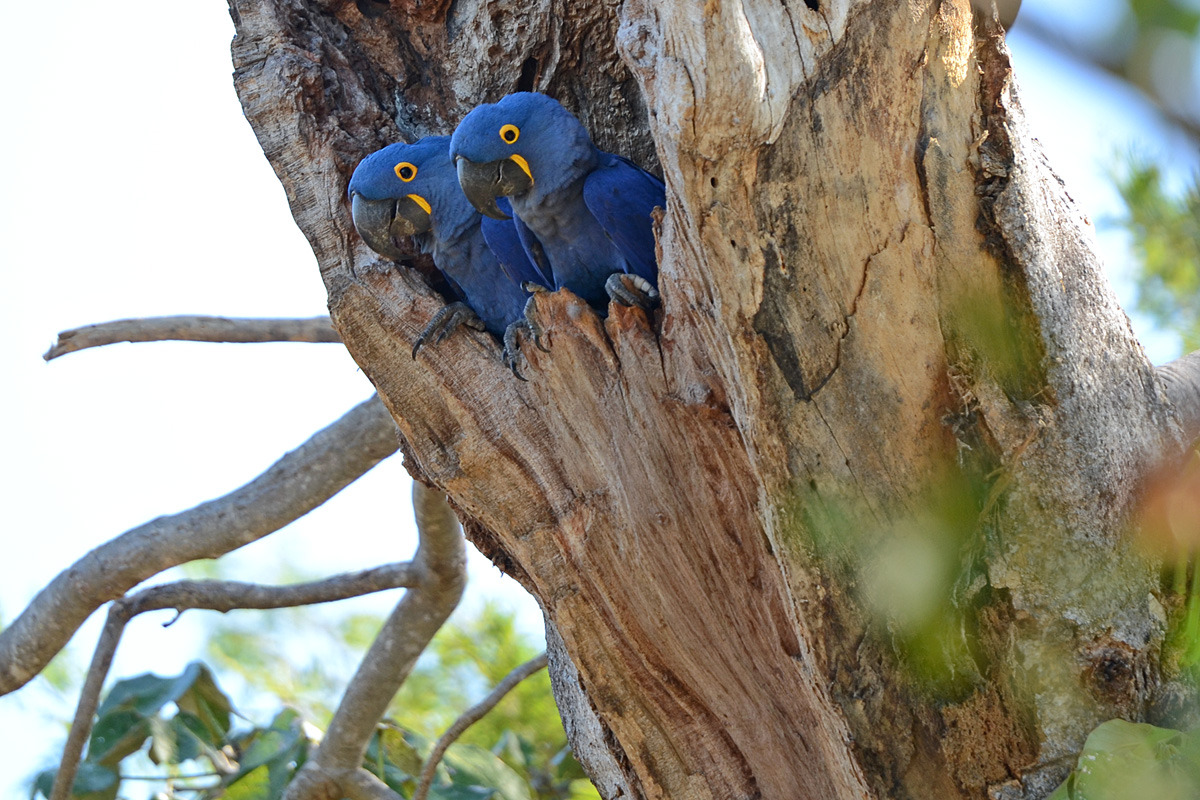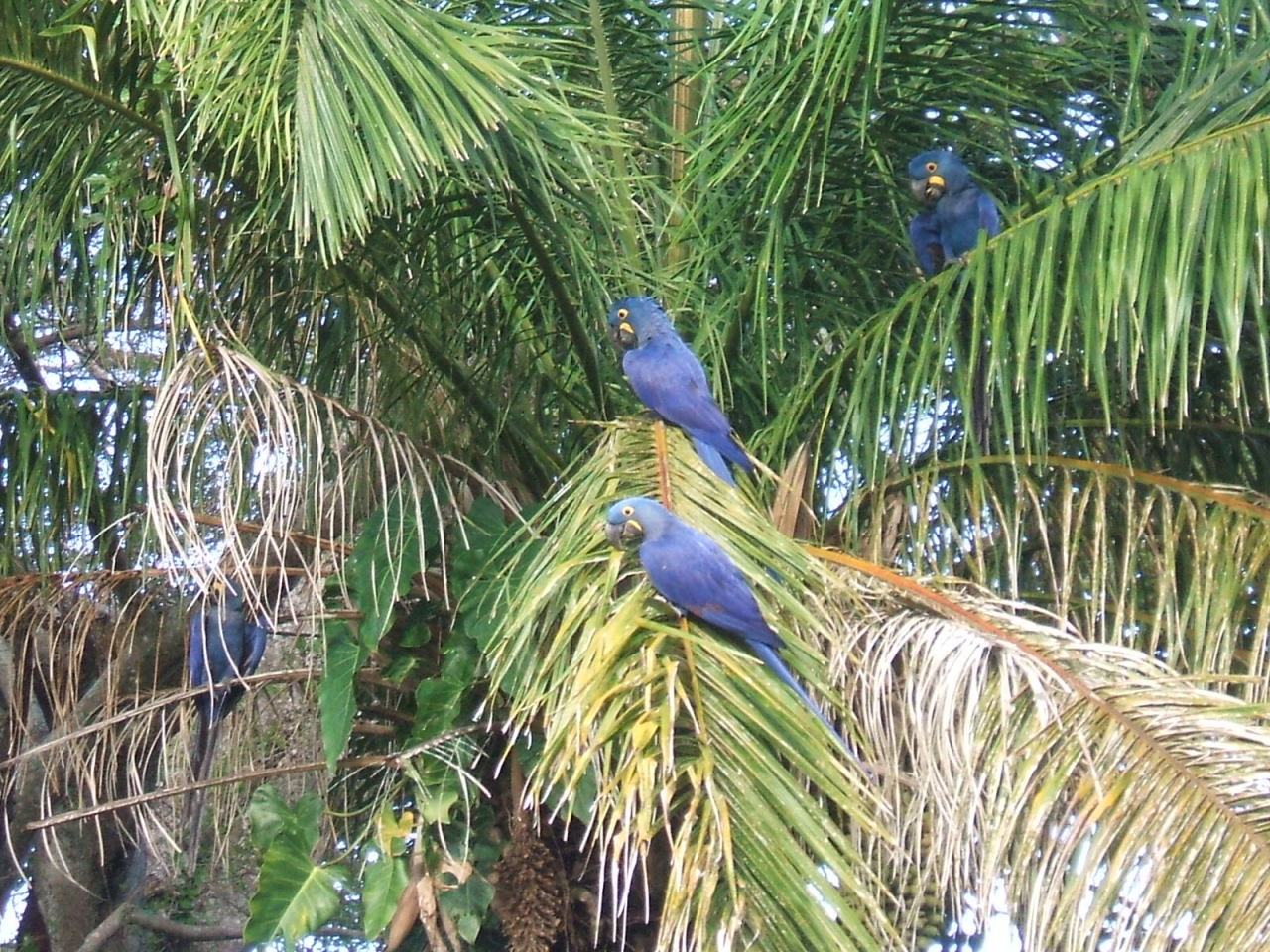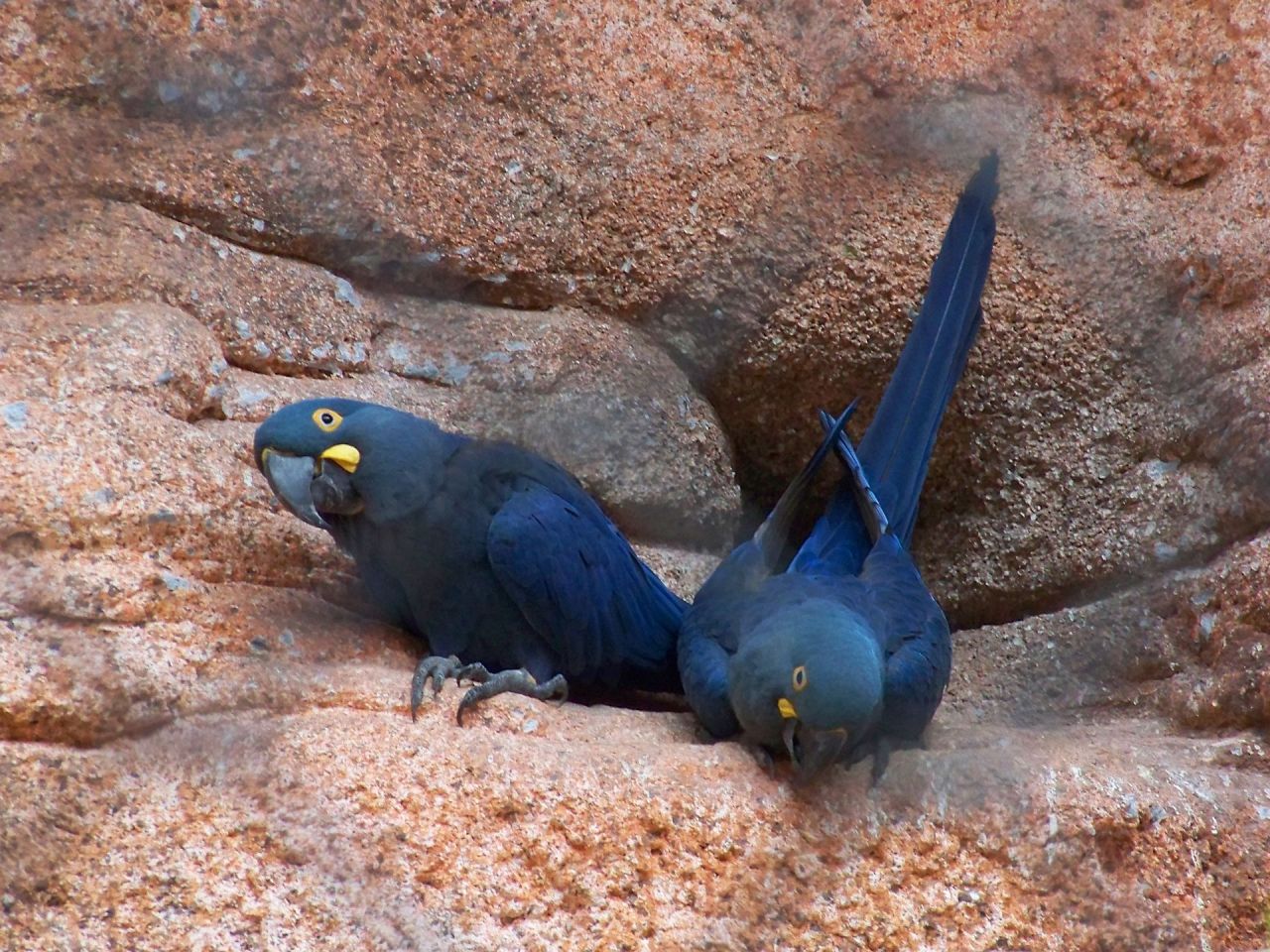Anodorhynchus glaucus, A. hyacinthinus, A. leari

Hyacinth Macaw, by Charles J. Sharp, CC BY-SA 4.0
Name: Anodorhynchus glaucus, A. hyacinthinus, A. leari
Status: Extant
First Described: 1824
Described By: Spix
Classification: Dinosauria, Theropoda, Neotheropoda, Averostra, Tetanurae, Orionides, Avetheropoda, Coelurosauria, Tyrannoraptora, Maniraptoriformes, Maniraptora, Pennaraptora, Paraves, Eumaniraptora, Averaptora, Avialae, Euavialae, Avebrevicauda, Pygostylia, Ornithothoraces, Euornithes, Ornithuromorpha, Ornithurae, Neornithes, Neognathae, Neoaves, Inopinaves, Telluraves, Australaves, Eufalconimorphae, Psittacopasserae, Psittaciformes, Psittacoidea, Psittacidae, Arinae, Arini
I am a big fan of parrots. They are some of the most intelligent dinosaurs, as well as some of the most beautiful - and they have some really weird and interesting types. So it was difficult to pick favorites for this week - and I’ve ended up picking two of them as it is! Anodorhynchus (Bill Without Teeth) is a genus of large and blue macaws that are mostly endangered, partially extinct. It doesn’t have much of a fossil record, but then again, parrots in general have a fairly scant fossil record. This genus lives in South America, and the best known species - H. hyacinthinus, the Hyacinth Macaw - is the longest known parrot in the world.

The Glaucous Macaw, by Bourjot Saint-Hilaire, in the Public Domain
A. glaucus, the Glaucous Macaw, is a probably extinct species of this genus. It was about 70 cm long, and was turquoise-blue in color with a large grey head, and a large bill. It lived in northern Argentina, southern Paraguqy, portions of Bolivia, Northeast Uruguay, and Brazil. It was called guaa-obi in Guarani, a language of native Paraguayans, for its calls. In the 1800s it lost a lot of its habitat, as the yatay palm it fed on was cleared for agriculture, and many of the remaining palms were fed on by cattle. It also was a victim of extensive trapping. The species was last officially recorded in the 1870s, though rumors of the species persist.

Hyacinth Macaw, by Hank Gillette, CC BY-SA 3.0
The Hyacinth Macaw, A. hyacinthinus, is arguably the most famous species of the genus, and it is the largest macaw and largest flying parrot species known. It lives primarily in portions of Brazil and Bolivia, and is sadly vulnerable, due to habitat loss and the pet bird trade. It mainly eats nuts from native palms, using their strong beaks to eat the kernels of nuts and seeds. They can even crack coconuts with their beaks! They use dry, smooth tongues with a bone inside of them to tap into fruits as well. They travel over the Amazon to look for the best fruits and nuts to eat.

By Geoff Gallice, CC BY 2.0
Very intelligent birds, they can use tools both in the wild and captivity. They can use chewed leaves and pieces of wood in order to feed on harder knuts, preventing them from slipping while gnawing on the food. They are calm macaws, nicknamed “gentle giants.” They nest between July and December, nesting in tree cavities, mostly of the Manduvi Tree. Competition for these holes are fierce, due to the relative lack of trees old enough to have holes of large enough size. The holes are then enlarged and filled with wood chips, and one or two eggs are laid, with only one usually surviving. The second egg, if laid, hatches later, and the smaller hatchling can’t compete with their older sibling for food. This occurs probably as an insurance policy - if the first egg is defective, the second egg ensures that young are produced. The female incubates the egg for a month while the male takes care of the female, and the chicks leave the nest after about 110 days. After that, they are dependent on the parents until they are six months old, and then mature and begin mating themselves until they’re seven. In the wild, they can live up to 50 years.

CC BY 2.0
The Hyacinth Macaw is protected by law in both countries it is found in, and there are efforts to preserve the population of these birds. Breeding it in captivity is difficult, with high mortality rates in hand-reared macaws. International trade, therefore, of the bird is prohibited, and exporting it has been banned. Artificial nest and chick management techniques are in the works, and awareness among cattle ranchers has been increased enough that many don’t allow trappers on their land. Their range, population, and the extent of trading are all being researched, and ecotourism is being used to encourage donors. Individual birds are also being catalogued in order to track the population. High populations of the bird are in zoos and private homes, in addition, so survival of the species seems probable, as long as work continues to restore their habitats and nesting sites.

Lear’s Macaw, by Marcos Pereira, CC BY 2.0
Lear’s Macaw, A. leari, is also called the Indigo Macaw, and looks very similar to the Hyacinth Macaw. However, ti has a different range, in more eastern portions of Brazil, and is much rarer and more endangered. It has a very long lifespan, of even longer than 50 years in the wild, despite its limited range. It has darker plumage without as much green tinge as the Hyacinth Macaw, It also has a different shaped patch of yellow near its bill. They live in groups and search for food and new nesting grounds together, with small groups of males scouting out the new land they explore into. They also can let out loud calls in the area when their is danger that can be heard for miles. They can even fly up to 35 miles per hour to escape predators and poachers.

By Rick Elis Simpson, CC BY-SA 3.0
These birds feed on Licuri Palm Nuts as well as other plants and flowers. They breed once a year, producing one or two eggs sometime from December to May, though they don’t reproduce every year. The juveniles reach sexual maturity after 2 to 4 years. They live near the Licuri Palm, which are primarily in sandstone cliff areas and more dry habitats than the rainforests of the Hyacinth Macaw. Their habitats were a mystery for many years, and only two colonies are known today. It uses saliva to soften the sandstone of its habitat, and then create crevasses in the rock to make nests. Estimates of the number of these birds vary wildly, and it is difficult to determine simply due to its rarity. It has suffered from hunting and trapping for trade, and conservation efforts are underway to preserve the sandstone cliffs and limit human destruction of this animal. It is only endangered, and it is estimated to have around 1000 individuals in the wild; which is better than previously, when it had been categorized as critically endangered.
Sources:
https://en.wikipedia.org/wiki/Anodorhynchus
https://en.wikipedia.org/wiki/Glaucous_macaw
https://en.wikipedia.org/wiki/Hyacinth_macaw
https://en.wikipedia.org/wiki/Lear%27s_macaw
Shout out goes to @godfenrir!















